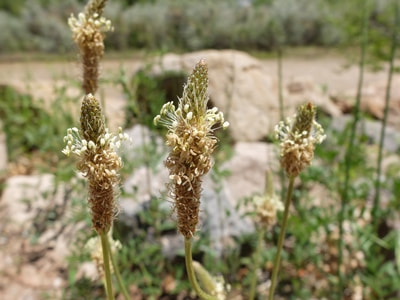|
Found in lawns, meadows, roadsides
Seen blooming in June near the Rio Chama English Plantain is a common weed on cultivated or disturbed land but it is interesting. It grows to 30 inches high with a rosette of long, lance-shaped, strongly veined leaves. The tiny, brownish flowers are tightly clustered in a spike and open in a ring starting at the bottom with protruding white stamens. Very young leaves can be eaten raw or cooked. Seeds can be ground into a powder and added to flours when making bread, cakes, etc. Flower heads taste surprisingly like mushrooms. Plantago species contain anti-inflammatory, antibacterial, anti-allergy and wound healing compounds. It was recorded as one of the nine sacred herbs in a remedy in the Anglo-Saxon Lacnunga, a 1,000-year-old text held in the British Library. The remedy contained nine herbs for wound healing, and modern scientific research shows that its chemical compounds support this traditional use. It is used in the treatment of a wide range of complaints including insect bites, cuts and wounds, hay fever and sinusitis, digestive disorders from diarrhea to constipation, cystitis, asthma and coughs. Source. If you are trying to identify a different flower, then you can check what other flower blooms this month. If you cannot identify a flower from the website, send a photo and where you took it to [email protected]. Read online for tips.
0 Comments
Leave a Reply. |
AuthorI am Marilyn Phillips, a native of England, whose love of nature and the outdoors from childhood brought me by a circuitous route to Crested Butte, Colorado in 1993 and 16 years later to northern New Mexico. My exploration of the many trails in these areas, my interest in wildflowers and photography, and career in computer system design came together in this creation. If you have any corrections, comments or questions, please contact me by email. Archives
September 2025
Categoriescopyright © 2020
|



 RSS Feed
RSS Feed